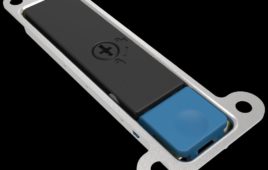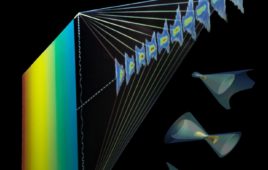Dish Network Corporation announced the Third Generation Partnership Project (3GPP), the global wireless standards body, formally approved narrowband Internet of Things (NB-IoT) support for Band 70. 3GPP specifications will enable the development of NB-IoT devices and network infrastructure using Band 70, among other potential uses for the band.
Band 70, which was approved in June of this year, already supports LTE-Advanced Pro and combines three spectrum blocks encompassing Dish’s current AWS-4 spectrum as downlink (2000-2020 MHz), Dish’s H block downlink spectrum (1995-2000 MHz), and unpaired AWS-3 uplink spectrum (1695-1710 MHz) held by entities in which Dish has invested.
Nokia said it teamed up with Vodafone on a successful trial of its AirScale Cloud RAN running on the AirFrame NFV infrastructure. According to Nokia, the trial split baseband processing functionality between real-time and non-real-time functions to perform time-critical functions closer to end users at the edge of the network while non-time-critical functions were centralized and virtualized in an NFV infrastructure platform.
The trial, which took place at Vodafone’s testing facility in Italy, used theNokia Cloud RAN platform to evaluate the performance of centralized 5G-ready architecture, measuring peak data rates as well as download and upload speeds in a range of scenarios on the macro network, containing high power macro cellular base stations. Nokia said the trial showed its Cloud RAN achieved all of Vodafone’s key performance criteria for throughput, capacity and resiliency, demonstrating that a cloud-based RAN architecture can provide the same level of high-quality service provided by a conventional LTE network, but with the added scalability, flexibility, and efficiency delivered by cloud technology.
Nokia said it will continue to collaborate with Vodafone on this project with the aim of deploying the technology commercially.
Microsoft last week said future Windows 10 updates will “enable connectivity that is always within reach” by allowing customers to buy data directly from the Window’s Store. The update will also include options that allow users to control how they use Wi-FI and cellular networks and consumer data. Microsoft said partners will be able to take advantage of eSIM technology to build devices without an exposed SIM slot, making it easier for people to activate a data plan right on their device.
Additionally, Microsoft said Windows 10 will join the ARM architecture through a partnership with Qualcomm. The company said hardware partners will be able to build a range of new Windows 10 PCs that run x86 Win32 and universal Windows apps, including Adobe Photoshop, Microsoft Office, and popular Windows games all powered by Qualcomm’s Snapdragon chips. These new devices are expected to be in market as early as next year.
Filed Under: Telecommunications (spectrums)




